Balancing the makeup of anesthesia care teams
Speakers
-
John "JW" Beard, MD, MBAImage

-
Lauren WolfeImage

-
David LeachmanImage
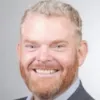
-
Jack PageImage
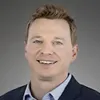
Balancing the makeup of the Anesthesia Care Team is a continuous challenge within our field.
A panel representing clinical practice, administration consulting, and industry discuss current trends, best practices, and advancing technologies that can help care teams realize operational efficiencies.
Show Notes
Transcript
Speakers
In this panel discussion, the different staffing models used in anesthesia practices across the US were discussed. It was found that there is a geographic component to the practice models, with the East Coast having more care team models and the West Coast having more physician-only models. Additionally, challenges such as selling the care team model to physicians, staffing shortages, and medical staff bylaws were discussed. Anesthesiologists, medical staff, healthcare administrators, and healthcare professionals are encouraged to listen to the podcast of the full panel discussion to gain a better understanding of the different staffing models used in anesthesia practices and the challenges associated with them.
Insights from the panel
- 30% of anesthesia is personally performed by anesthesiologists, 55% is care team models, and 15% is under medical supervision from CRNAs
- There is a geographic component to staffing models, with the East Coast having more care team models and the West Coast having more physician-only models
- Factors such as economics, local geography, and medical staff bylaws determine staffing models
- Challenges associated with care team models include selling the model to physicians, increased workloads, strain on staff and hospitals, burnout, retention issues, and attrition
- Over the past few years, staffing shortages have been exacerbated due to COVID-19.
JW Beard: My name is JW Beard I'm the chief medical officer of GE HealthCare Patient Care Solutions, and I'll be working with our panelists today.
We'll have a brief opening, introductions, then we're going to discuss some of the key considerations for staffing model, which includes clinical outcomes and financial implications. We'll go into the panel discussion and then we'll wrap it up with some Q&A at the end.
To get started, I'd like to thank ASA, Ventura Health and Sound Physicians in GE HealthCare for making the presentation this morning possible. Special thanks to Ventura Health, who collaborated both on the content and our speaker panel.
We have Lauren Wolfe, who is the vice president of advisory solutions at Ventura Health. She has over 15 years of anesthesia practice experience with a focus on practice modeling and staffing, utilization, efficiency, clinician management and scheduling and other operational challenges. She was previously executive director of a 300+ clinician anesthesia practice in the northeast.
David Leachman is CEO of sound physicians anesthesia division. He's a board-certified anesthesiologist with over 20 years of practice and healthcare management experience. He's the CEO of the Anesthesia Division, which is the fastest growing anesthesia practice in the United States with over 1000 clinicians today. He drives clinical strategy, business operations, Medical Group affairs and grows the specialty within sound physicians. Prior to sound, he was president and CMO of Main Street anesthesia in New Mexico and we have Jack Page, who leads the digital product portfolio within GE HealthCare, Anesthesia and Respiratory Care business. He has more than 15 years of experience in medical device and innovation within the perioperative and critical care spaces.
And to get started, we're going to take a look at 2 recent publications. This is a publication from JAMA Surgery in 2022 that looked at morbidity and mortality with various staffing ratios, various care team staffing ratios. This study suggests that the higher ratios are associated with higher morbidity and mortality. There have been other studies that don't support this association, but this is a recent publication that's worth noting. From the ASA Monitor in 2022, this is a financial analysis of care team staffing ratios.
That's a staffing model which is covering operating rooms with no break staff from 7:00 AM to 3:00 PM. Changing the coverage requirements changes that cost analysis significantly in this publication. If the coverage is required from 7:00 AM to 5:00 PM and the model includes break staff, we can see that that cost associated with those staffing ratios comes up near the MD line and in some cases exceeds it. And so with that introduction, we'll get our discussion started with our panelists.
Lauren, I'd like to start with you. So, in your experience, what are the staffing models that you've seen in use and what do you think the relative distribution of those, the proportion of their use in different practices?
Lauren Wolfe: You know, when we talked about talking about this presentation and gathering information, took a look at our client base and our consulting client base as well. And you know, going back in the research and looking at what are the published ratios for the different practice models. So what we found in the in the publications is about 30% of anesthesia is personally performed by anesthesiologists across the country. Another 55% is care team models, and that leaves about 15% percent of anesthesia to be under medical supervision or CRNA's personally performing. When we took that ratio and then you know those numbers and compared them to what we were seeing across our practice as our client base and then the clients that we work with on our consulting division, those numbers seem to hold pretty true. So you know personally performing about 30%.
And what we did notice is there is a geographic portion to that. So we do see you know the East Coast has a lot more a lot more of the care team and even starting to move into the anesthetist personally performing and stepping outside of that medical direction into the medical supervision models and as you phase out towards the West, you're seeing a lot more of still the physician only models. So there's a geographic component to that as well with that distribution of those numbers.
JW Beard: Dave, is that consistent with your experience? Both in New Mexico and now with a nationwide group with sound?
David Leachman: I think that's consistent and so my background is really private practice and that's grew up in a Underserved state and really that was my professional experience and what led to where I'm at today. It's consistent. It's geographic, you know, it really depends on a lot of factors. I think we can kind of talk about and hoping not some of what we talked about, but yeah, definitely consistent.
JW Beard: Our groups, exclusively MD or care team? Or is it oftentimes a mix? Where you have physician rooms for a portion of the cases and then you have care team in the other departments?
Lauren Wolfe: Definitely seeing a mix, especially in those groups that do the care team models. There are times and situations where it makes sense to have MD only coverage and that's when you have to look at how many rooms are going on and where it's the best use of personnel.
Definitely see that in the you know in the Care team model groups where you see some of the personally performing as well. You see it a little less often in the in the groups that are MD only. It's rare to then see them bring in a CRNA when they're not part of the group, so it's rare to see the MD model then occasionally do care teams. So that's a little less frequent.
JW Beard: And Dave, you mentioned there are some factors that may drive decisions. Lauren mentioned there's geographic differences. What are those drivers? Are there differences associated with the facilities? Urban, larger hospital, smaller rural hospital ambulatory centers. Do those all contribute in some way to the models that may be available, the most suitable?
David Leachman: Yeah, good question. I think probably the best way to characterize that is it, it mostly depends on sort of the local geography, the local practice standard, and a lot of it is impacted by the economics of the practice and how the model is designed. There's a large part of that is medical staff and the medical staff bylaws and what's expected.
I couldn't say, JW, that there's sort of a, you know, a universal predictor. It really feels to be sort of case by case, practice by practice. A lot of times city by city, so it's really a conversation is as you look at that, and you know, in my in my role as we present different models. Ultimately it's decided by a medical staff by an administrative team and typically by a group of surgeons involved. That's really what sort of the final decision and how we staff.
JW Beard: So certainly lots of local factors that are affecting the staffing model. Is there a trend? Like what were the staffing models 5-10 years ago versus today and what does it look like they're going to be going forward?
Lauren Wolfe: Some of the things that we've seen in general is out in the rural or in the rural locations, you're going to see a lot more CRNA only models because of the availability of clinicians. And so that's a lot more prevalent when you get into the larger cities and the academic institutions, their coverage models are a little different because of the requirements of academics. So you know your ratios are different, that you have to do there, you have to do 1 to 2 instead of 1 to 4 in the academic settings. And so there's different requirements for those different locations. And as Dave alluded to, there are often medical staff bylaws that require, you know, medical direction.
And so falling outside and planning to fall outside that medical direction ratio of 1 to 4 isn't something that you can do without going through the process of having that conversation with administration, with surgeons and going through the process of changing the medical staff bylaws. So sometimes it's not as easy as just saying: hey, we want to we're going to staff it differently. You have to look at all of those other considerations and look at that too.
What we're seeing nationally is people looking at this because as anesthesia, there's not a lot we can do to control the volume that's coming in, we can't go out and mark it and just bring in more patients. We're subject to the patients that the surgeons bring to the facility, so in that regard, all we can do is provide really good anesthesia care so that the surgeons don't have any objections to bringing the patients to that facility, and you can't do anything about the payer mix. So that leaves the expense side and 90% of anesthesia expenses are personnel.
And so that, you know this staffing becomes a really crucial discussion because it's something that we can influence. And so we've seen a lot of people as the economics of healthcare are changing and staffing shortages are prevalent everywhere. We're seeing, you know, people relook at how they're staffing and thinking okay, you know, maybe what we've doing is not going to be what we have to continue with in the future to be able to have a sustainable model. So we're seeing groups who have been traditionally MD only looking at care teams, we're seeing care team medical direction models saying: okay, do we need to step outside medical direction and what are the implications of that going to you know, a greater than one to four ratio. And we're actually seeing some facilities consider having CRNA only models where the surgeons are the medical direction, so without anesthesiologists, recent changes.
JW Beard: Through many of the lectures this weekend there has been this ongoing highlighting of the one of the critical issues, which is staff shortage, and it does lead to some of these larger ratios. Dave, what are the challenges in the care team model once these ratios get a little bit higher? If you're in an ambulatory environment, if it's a one to four ratio, that anesthesiologist may be doing 20+ cases in the day. What are the biggest challenges that exist there? And if it in some places maybe that ratio extends further?
David Leachman: I'm going to play off a little bit of what Lauren was saying and then come to that. For myself, leading a company as an anesthesiologist, much of it is an obligation to create a safe model, to put the right person in the right place. Healthcare is what happens one patient at a time. We present models as a solution to be able to do that, but what's sacred is not the model, it's the interaction. It's delivering safe care. With that, kind of, front and foremost, now we have to make decisions and with that decision comes a lot of different pressures. Can we afford? What can we do?
To answer your question specifically about what are the challenges, I think as anesthesiologists, we understand the value of participating in that care team of being involved in that patient care. Sometimes my observation, and I've I have practiced personally, I believe in every type of practice, from a physician only practice CRNA, large multi-specialty practice early in my career, side by side with CRNAs.
You know trained and practiced grew up in an opt out state, one of the earliest opt out states where there was a pair of pursue type of practice standard. I've done it all. I've been in a, to answer your question specifically, where my most difficult days and frankly my most disappointing days where I was running between rooms and had sort of a crisis that was, you know, impending or happening, yet I was trying to allocate my personal resource to all of these settings and some of the some of the most frustrating days. So often times selling that to physicians, you know, we all like to do our own cases. It's no different than any other provider group: CRNA's AA's, you know, we like being with patients. That's what we'd like to do. And sometimes selling a busy care team to physicians today, when physicians are really hard to recruit is difficult. And so every one of them wants to know, okay, well, sure, I understand, I will contribute to a care team, but what percentage of the time will I be doing my own cases? Probably that's, you know, first and foremost the biggest challenge on top of economics.
JW Beard: Thanks Dave. And Jack, I know you speak to numerous customers. What do you hear? Are your learnings consistent with what Dave and Lauren have talked about? And then what are you and your team doing to address it?
Jack Page: Yeah, it's very consistent. You know, we hear from large hospitals to small hospitals to big healthcare systems, academic centers, ASC's community hospitals and staffing is always top of mind and this isn't a new issue. You know, pre COVID we were still hearing that staffing was an issue, there was a shortage and I think the last couple of years have really exacerbated the problem. And you know, this has led to strain for these hospitals, strain for these providers as David was just talking about. And it really creates environments that we hear from, from anesthesiologists that it creates situations like, you know, this increased workloads that they have to deal with and ultimately that can lead to things like retention issues and attrition.
And then ultimately it becomes this vicious cycle where your staffing shortage is leading to issues with your current staff, which then results in more attrition to impact that that shortage again. And so we hear hospitals doing things like having more, you know, temporary workers to fill in some of those situations, increasing their supervision ratios, like Lauren was saying, and we also hear other, you know, solutions like people just have to work more hours. Which, you know, it may work in the short term, but ultimately could have negative effects in the long term. And so with these anesthesiologists who have to be responsible for multiple patients at the same time, as David was talking about, I mean that's very taxing on their mental load, you know, day in and day out.
And so you know, we believe that technology should be able to be an assistant to clinicians in these situations to help to reduce that mental load and increase their confidence to support, you know, focus on things that really matter like their patients and take away some of those mundane and repetitive tasks that, you know, they end up taking up a lot of their time.
JW Beard: Yeah, that's great. In a roundtable discussion, I was participating in yesterday, there was a focus on how do we get the anesthesiology resources to the right patient at the right time. And I think certainly, you know, having a view into kind of the near real time physiologic data, the ventilator data, the, the anesthetic data can certainly facilitate that as well, there's also some discussion about how we can more effectively risk stratify patients when they come to the operating room to kind of proactively manage the staff assignments to them. Dave, we were talking last night, kind of about what the future look like and we would brought up the what about the virtual ICU or the telemetry model. Like, would that work in an operating room environment? Remind me what your thoughts are on that.
David Leachman: All right, how much time do we have? So Anesthesia's hands on. So first of all, I have no stake in GE and just participating to help out some friends and to have a great dialogue. So fascinating technology tele-ICU which company that I work with does provide those services, but that's a dialogue over distance and it's a dialogue and it's advisory services and to intervene in care in the operating room with things moving quickly. Yeah, I don’t see that. But as we were talking last night, I'm old enough as few of the great heads that I see to remember the onset of fetal monitoring. And I saw the difference in practice, in obstetric practice with fetal monitoring that was visible at the nursing station and made visible and monitors and then later visible even on mobile devices. So it feels very analogous and hearing and talking about this and as I was talking about some of the difficulties as an anesthesiologist in attending multiple rooms, I think this could be really helpful.
JW Beard: Yeah, I think your comparison of the operating and workflow and the time acuity associated with operating room care versus the ICU or the telemetry environment, I think that's really valid and certainly something that we will consider. I think for these last couple of minutes, Lauren, I think starting with you, what is the care team, what is anesthesia delivery going to look like in 5 or 10 years? And there's everything from Doomsday, we're not going to be able to cover the number of patients that need surgeries, to we're going to effectively adapt and keep the wait times to what we expect here in the United States.
Lauren Wolfe: Well, I don't have a crystal ball, if I did, I probably wouldn't be here. But you know, I think we all, we all see what's happening right now, and there's definitely that pressure of the staffing, so there aren't enough CRNA's, there aren't enough anesthesiologists for all of the, you know, for all of the jobs that are out there and all of the surgeries that need to get done. So we need to find, we need to be adaptable. And so I think that's the message that everyone needs to take home is you have to have an open mind, you have to be able to look at things and analyze every situation and realize that it might change. So when you're looking at your current staffing models, you know, realize in six months or a year that the right answer might be different than what it was this year.
And so I think you have to be open to different scheduling paradigms to you know, people have different wants and needs out of a job now than we're seeing, you know, even at the beginning of my career, what people are looking for now is very different. And so you have to be able to roll with that, adapt your practice, you know, think outside the box in different scheduling models in how you're using your personnel, and when we say getting the right person in the right place at the right time, it's not just in staffing the OR's, it's within that day of getting the right people on the right cases. So that they can be at the right place at the right time, and you know, technology like this and like the advanced scheduling system, so that you know where everyone is and you can see what's going on, we'll help you do that. So that when there's a patient in need, that anesthesiologist can be there and not necessarily over here just doing an induction or an emergency. And you know, you really have to you know, have coordinated care and you have skilled providers who can coordinate those efforts and not everyone's good at that. So you've got to identify those people in your practice and engage them and make sure that they're working with you to work with your people.
JW Beard: Dave, how about you? What's it going to look like in 5-10 years?
David Leachman: Yeah, so if you attended the keynote yesterday, gentlemen talked about, it's no longer a 5 year plan, it's like a one or two year plan. What's it going to look like next year? It's really what it feels like mostly driven financially, but a lot of that's driven also by workforce availability. Something happened during COVID, it's my observation as well. People decided they liked their families. It felt like our workforce shrank about, you know, 20% or so? So, JW, I honestly don't know. I think we're going to have to confront some of the sacred cows of our, you know, philosophies and we tend to approach things from the perspective of the fool's choice that it's either one or the other, and in how we do things that there's a right and a wrong and that we sort of neglect the in between. Yet we practice sort of differently. We live life differently, and I'm not saying that to suggest you know any path other than when we're caring for a population with a limited number of resources, including fiscal resources and staffing, resources, equipment resources. We have to make decisions and those drivers will lead us to make the right decision at the right time and forethought and planning, set ourselves up to make the right decision at the time.
JW Beard: Thanks, Dave and Jack, we're coming close to the end here, but I want to give you all one more shot. Thanks Dave. And Jack we are coming close to the end here. But I wanna give you one more shot. So Jack, in about 30 seconds or so. What is technology going to look like in 5-10 years from now?
Jack Page: As we considered it, as we continue to deal with the constrained supply of anesthesia workforce and the increasing demand for anesthesia services, it's a big challenge that technology can help to support, I think. And as a single provider has to deal with more and more decisions to be made every single day, technology can support that decision making process through either helping them focus on the right thing and, you know, as providers are asked more and more to do more multitasking, that's possible as a human to do multitasking, but it's very, very difficult to multi-focus And I think that's where technology can support in terms of that day-to-day life of an anesthesiologist.
JW Beard: Thanks, Jack. OK, final words to both of you, what would be kind of the most important word of advice to our audience when they're considering a staffing model and their facility?
Lauren Wolfe: You know, I think for every facility you've got to break it down and look at it individually. So just because one staffing model works at this facility, it doesn't mean that what's going to make sense at all of your facilities. You know, every facility is different in their needs, in their patient acuity, in their payer mix. So when you're looking at all of these things, you have to look at what is going to be best for the patients, what's going to work financially for your practice and decide you know site by site. But it's not, it's not one size fits all.
JW Beard: How about you, Dave?
David Leachman: Same. Dialogue, go to talk to surgeons, you have to be aware of the staffing options, for the operating room. We can, you know, we have to be aware of resources, your ability to recruit. Care is only as good as the model that you can deliver to. So sometimes these decisions are made in, you know, in an office somewhere, and yet they don't fit for all the stakeholders, nor are they attainable. Those are the models that we fail. So talking early and a lot be willing to change.
JW Beard: Well, thanks to all of you for contributing to this panel this morning. To our audience thank you all for getting up early and attending, we really appreciate it. And with that, we'll wrap up, enjoy the rest of the conference. Thank you.
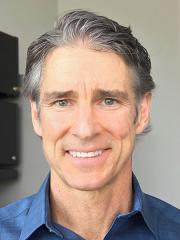
John "JW" Beard, MD, MBA
John “JW” Beard, MD, APSF board Member and Chief Medical Officer of GE Healthcare – Patient Care Solutions. Prior to entering the medical industry, Dr. Beard was in clinical practice for fifteen years as an anesthesiologist. While in clinical practice, Dr. Beard led multiple quality improvement initiatives and held leadership positions including Chairman and Medical Director of the Department of Anesthesia.
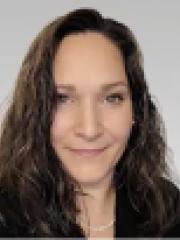
Lauren Wolfe
Lauren Wolfe is the vice president of advisory solutions at Ventura Health. She has over 15 years of anesthesia practice experience with a focus on practice modeling and staffing, utilization, efficiency, clinician management and scheduling and other operational challenges.
She was previously executive director of a 300+ clinician anesthesia practice in the northeast.
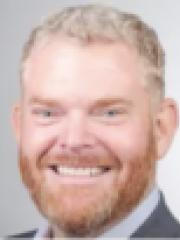
David Leachman
CEO, Anesthesia Division, Sound Physicians - Board-certified anesthesiologist (ABA) with more than two decades of experience in clinical care, practice management and executive leadership.

Jack Page
Jack Page leads the digital product portfolio within GE HealthCare, Anesthesia and Respiratory Care business. He has more than 15 years of experience in medical device and innovation within the perioperative and critical care spaces.







